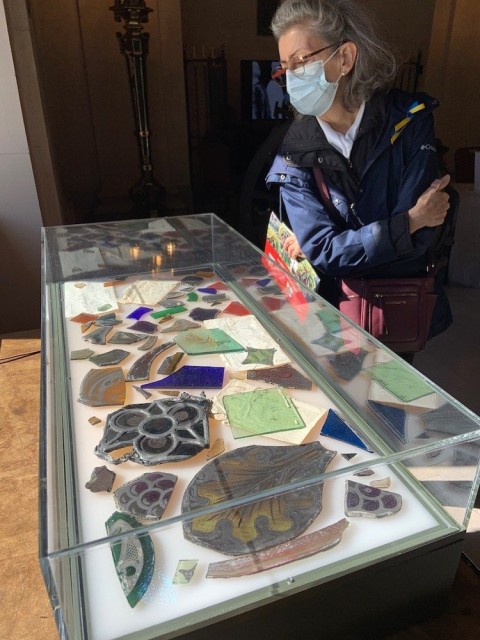WWII bombed churches and synagogues live on in art glass exhibit

The man in the trenchcoat stood in the ruined church, gazing down at a fallen crucifix, its life-sized image of Jesus broken, bashed and half-covered in rubble.
Nearby, a statue of the Virgin Mary, somehow still erect after intense bombing, looked down with the man, her eyes seemingly full of sorrow.
It was 1945, and the man—US Army Chaplain Frederick A. McDonald—then performed what had become a kind of coping ritual. He reached down among the debris and retrieved a handful of colored glass, slipped it into an envelope he carried just for the purpose, and marked it with the name of the church and its location—Liebfrauenkirche in Trier, Germany.
“I was particularly saddened by the full-bodied crucifix which had fallen from the roof beam,” said McDonald, who died in 2002, decades later. “The face of Christ turned to the sky, visible through the mostly destroyed roof, as if continuing to speak to the Father, ‘They know not what they do.’”
That moment is now frozen in glass in an art exhibit called “Remembered Light: Glass Fragments from World War II, The McDonald Windows” on display in San Francisco’s Veterans Building through Nov. 20. The show includes 25 glass works by 13 different artists built around the shards McDonald, an Episcopal priest, collected from the destroyed churches, synagogues and chapels he visited in England, France, Holland, Belgium and Germany in 1944 and 1945.





